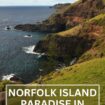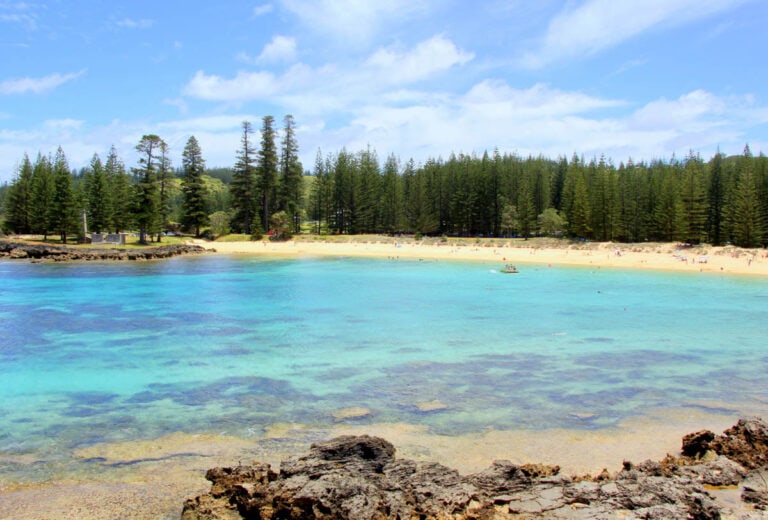
Go World Travel is reader-supported and may earn a commission from purchases made through links in this piece.
‘To your left lies the UNESCO World Heritage site of the penal colony of Kingston. To your right is Slaughter Bay, within two metres of which you will find the world’s second southernmost coral reef. In front lies the endearing Emily Bay, often ranked among the best swimming paradises of all Oceania…’
After receiving us at the small airport, Mr. Wayne, the owner of the lodge where we would be staying gave us a short tour of the island. After the customary point-outs of grocery stores and restaurants, he took us through the ‘arteries’ of the island – Taylor’s Road and Country Road.
We also stopped not far from a rocky beach. Here he started listing what were some of the many gems of the island.
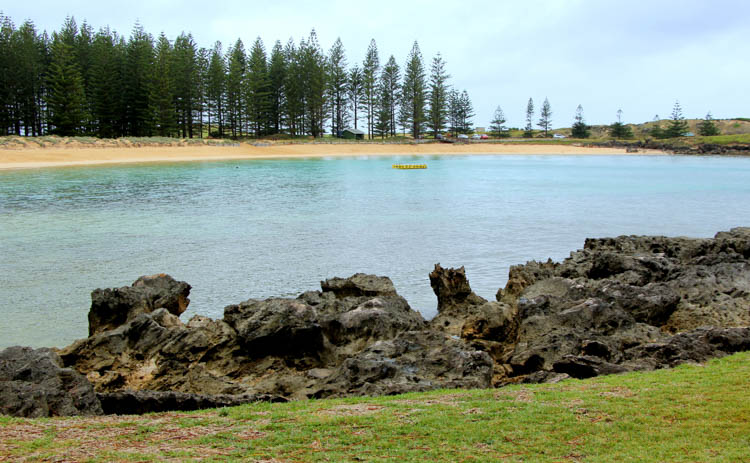
‘And what lies behind?’ I asked, wondering if there was anything to complete a tetrad.
‘I was coming to it.’ he smiled, ’Behind us, you will find two of the four museums within walking distance. They will give you a fantastic download of the 500-year-old history of this place of Polynesians, Penal prisoners and Pitcairn Islanders.’
Seeing all the raised eyebrows in our group – clearly proclaiming we had no idea what holiday we had signed up for – Wayne gave us a sweet smile and formally cut the ribbon to our holiday. ‘Welcome to Norfolk Island!’
A hidden gem in the Pacific Ocean, Norfolk Island is an external territory of Australia. It’s controlled directly by the Australian Parliament. It lies about 1600 km northeast of Sydney, being closer to New Zealand and New Caledonia than mainland Australia.
Buried under three distinct layers of its past, the little island oozes history. It is clad in green like a jaded jewel in its eponymous Norfolk Island Pine trees.
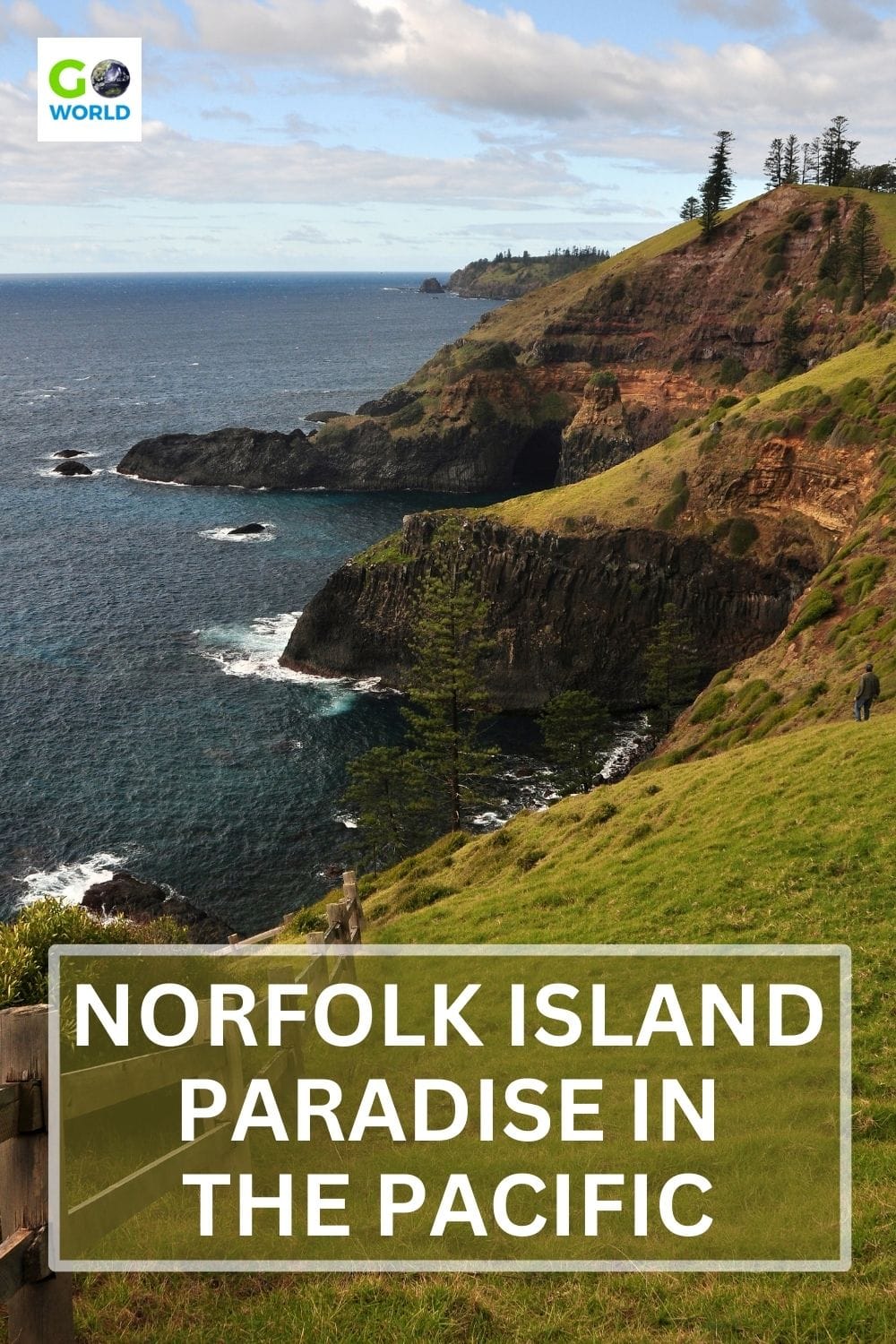
Small Island Packs a Big Punch
For a small island with a population of 1700, Norfolk Island – or NI for short – packs a series of punches. There is layer upon layer of adventure, awe and amazement – for the seeker who knows of its hidden existence.
NI is overshadowed by other neighbouring bigwigs (Lord Howe Island, New Zealand and Fiji) in the tourism circuit. But this in turn, renders a sense of exoticness and isolated fascination for the traveller in search of the offbeat.
Heading to the island is like uncovering a jewel box lying not far from plain sight. Yet largely unnoticed, and teeming with precious memories. Experiences such as watching red-tailed tropic birds flying backward as part of their mating ritual.
Best Tips & Tools to Plan Your Trip
Maybe discovering Word War II ramifications slowly being consumed by nature. Or being bamboozled by a zillion stars in what is a Gold Class dark sky reserve and watching cinnabar sunsets from heady cliffs. The possibilities for making memories are seemingly endless.
Wayne had given us the perfect prologue to what to expect in that jewel box. We couldn’t wait to discover them, one by one. But first, we had to head to our accommodation. Or should I say kingly cottage hidden in acres of landscaped greens?
We were staying in the sprawling Dii Elduu cottages. There were no neighbours visible for miles and we felt like we’d been exiled in one corner of the Pacific. After the Covidian craze in the hullabaloo of Sydney, it felt like the perfect balance. Straddling the comforts of civilization and the serenity of isolation.
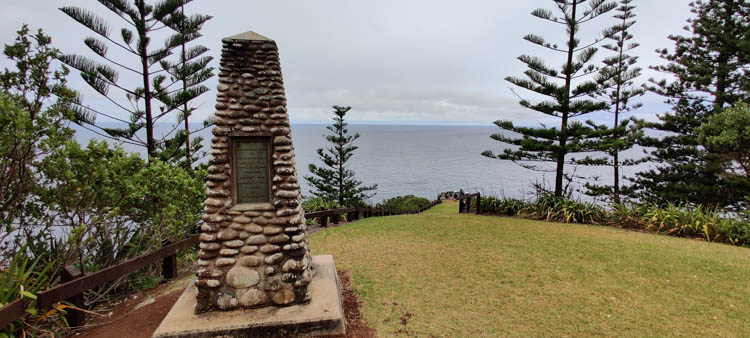
Preserving the Past
Norfolk Island has three distinct layers of its past. There is archaeological evidence of Polynesian settlers dating back to the 13th to 15th Centuries. This marks the island as the westernmost outpost of the Polynesian triangle. The triangle is formed from the three corners at Hawai’i, New Zealand and Easter Island – the realm of the Polynesians.
Why they left, no one knows. However, stone tools unearthed near Emily Bay, along with the presence of banana trees and Polynesian rats on the island are some of the many proofs pointing to their colonisation.
The history chapters thereafter are all written in English. Captain Cook had spotted the island in his second sojourn of the Pacific in 1774. He named it after the Duchess of Norfolk. Captain Cook lookout to the north of the island commemorates the spot near Duncombe Bay where his men first landed.
Cook had recognised the potential of the tiny island. This was largely due to its towering pine trees and flax plants which could be used for shipbuilding. Also to provide critical supplies to Britain which depended on other kingdoms or colonies for these materials.
Not surprisingly, in 1788, within weeks of establishing the colony in Sydney, Governor Arthur Phillip sent men led by Lieutenant Phillip Gidley King to take control of NI. It was quickly made Britain’s second establishment in the Pacific, as old as Sydney itself.
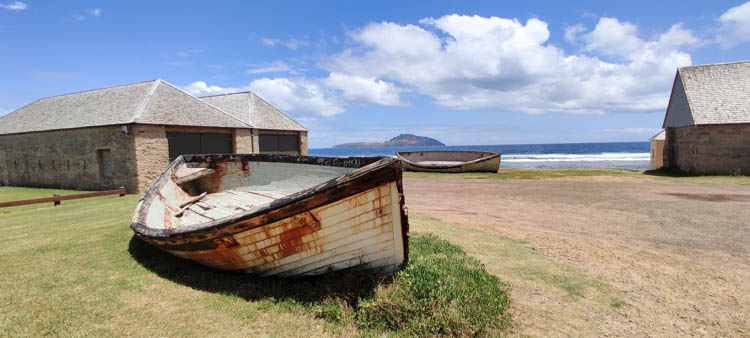
Second Sydney
With a great lack of originality, this first settlement was also called Sydney. But it was later renamed King’s town after the lieutenant, which over time condensed to Kingston.
The penal colony, however, ended in 1814 when the prisoners were moved to Tasmania. It was then known as Van Diemen’s Land, which was much easier, closer and cheaper to maintain.
The penal colony was restarted a decade later in 1825. At this time, the distance from Sydney – a bane in the earlier times, was considered a boon for imprisoning ‘twice-convicted’ men from the colony at New South Wales.
This redux lasted three decades and was also the most gruesome period on the island. Prisoners were flogged, tortured and punished extensively, earning the island’s moniker as ‘Hell in Paradise’.
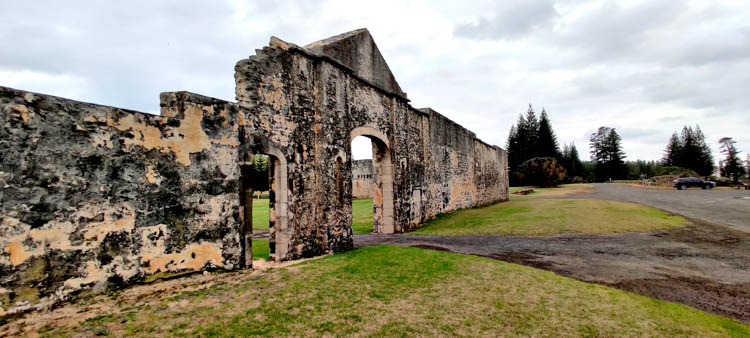
The Many Museums of Norfolk Island
A lot of the island’s stories are preserved in the Kingston and Arthur’s Vale Historic Area (KAVHA). This is one of 11 historic sites around all of Australia that form the Australian Convict Sites UNESCO World Heritage Property.
The Commissariat Store today displays many of the remnants from the First and Second Settlement times. No 10 Quality Row – built during the peak of the brutal Second Settlement – preserves a slice in time and shows us the life of its inhabitants from the 1840s.
Not far is the HMS Sirius exhibition. It houses objects recovered from the flagship of the First Fleet – HMS Sirius – that had unfortunately wrecked near the island in 1790. The masterpiece of the exhibition is one of the carefully preserved anchors from the flagship. Also, cannons, cannon balls and many other knick-knacks reflect life more than two centuries back.
What is really amazing is the way these shards of history have been carefully dusted, facelifted, preserved and artfully displayed. They connect the many vagrant dots and create in turn a wonderful montage of history.
The last of the museums in the KAHVA is the Pier Store which focuses on another interesting story of Norfolk Island. It is the story of the descendants of the Bounty mutineers that form the third and final chapter of settlement in the island’s history.
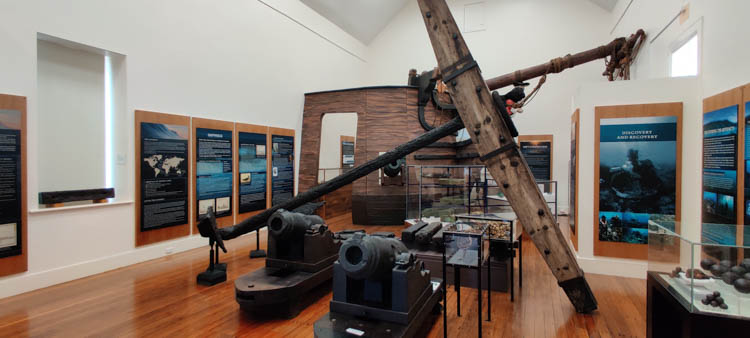
Mutiny on the HMS Bounty
The HMS Bounty is perhaps the most famous – or rather, infamous – ship that has sailed the Pacific. Its story has been dramatized on the silver screen multiple times including one that starred Marlon Brando.
With William Bligh as captain, the HMS Bounty sailed from Britain in 1787. The objective was to collect breadfruit trees from Polynesia and transport them to the West Indies to provide cheap food for African slaves. (Talk about globalization in the 18th century!).
The first part of the voyage went as planned. The ship landed in Tahiti in ten months’ time, and the crew spent five months collecting over a thousand breadfruit trees. In the process enjoying the hospitality and paradisical beauty of Tahiti.
When the ship began its journey to the West Indies though, trouble broke loose. The crew staged a mutiny on 28th April 1789 near Tonga under the then Acting Lieutenant – Christian Fletcher. The crew on the Bounty split into two under Fletcher and Bligh and both parties had amazing adventures thereafter.
Bligh and his men were forced to leave on the ship’s utility boat. They then sailed an incredible 6,500 km in the open seas to reach the Dutch settlement of Coupang in present-day Indonesia.
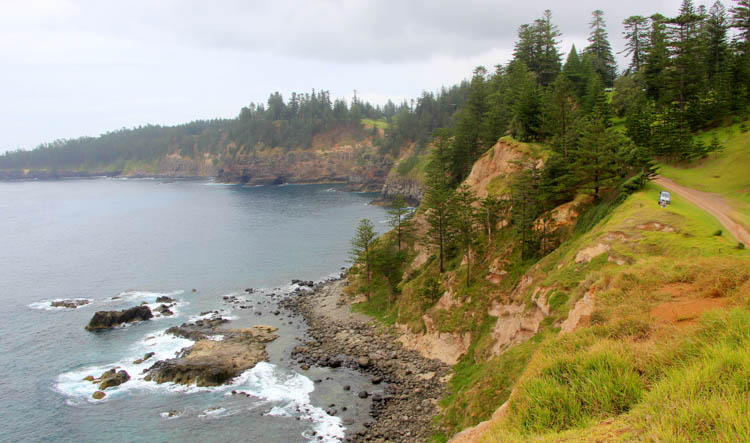
Team Fletcher
On the other hand, Team Fletcher tried to find a safe haven, knowing very well the Royal Navy would come after them, court-martialling all to death for staging the mutiny. They sailed beyond Fiji and the Cook Islands and finally settled on the tiny Pitcairn Island. It was chosen as the location was incorrectly mapped on the Navy charts. Thereby implying not many ships could probably trace the island’s real location.
The mutineers set the Bounty on fire lest it be traced. Together with kidnapped Tahitian men and women, they tried to establish a settlement on the empty Pitcairn Island. Though it took nearly two decades to find the mutineers, constant fighting on the island led to the deaths of nearly all except one of the mutineers.
In 1856, the descendants of the mutineers were transferred to Norfolk Island. This completed the saga of the Mutiny and added another feather to the cap of NI, that of the island’s Third Settlement.
Today, many a tradition on the island celebrates this unique intermingling of the descendants’ English forefathers and Polynesian foremothers. Including the local language called Norfuk. This, along with English, forms the island’s official language. Norfuk was added by the United Nations to the list of endangered languages in 2007.
Interestingly, following in the footsteps of Fletcher whom he was portraying on-screen, the enigmatic Brando ended up marrying his co-star from the movie, Polynesian actress Tarita Teriipaia. The couple raised a family on the island of Tetiaroa. Is history repeating itself?
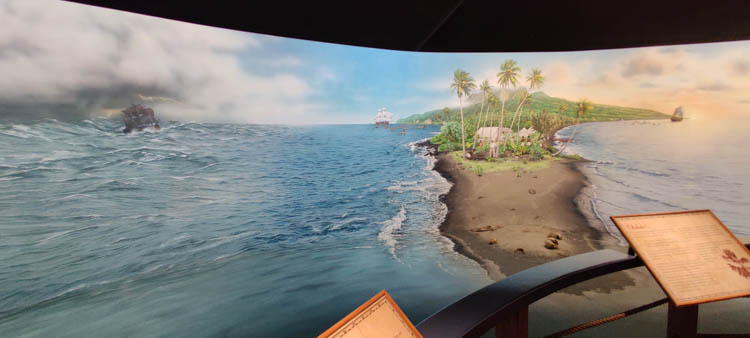
The Cyclorama
The Pier Store narrates these stories of the Mutiny while housing artifacts from the Bounty and the settlement on Pitcairn Island. But if you want a visual depiction of the story, a visit to the Cyclorama is a must.
It houses a 360-degree continuous painting on a circular wall bringing to life the story of the mutiny in vibrant colours. Large murals and 3D effects merge paintings and artifacts to create surreal imagery.
The concept was that of Marie Bailey, sixth generation descendant of Christian Fletcher. The paintings were completed by Island artists Tracey Yager and Sue Draper among others over 16 long months.
Get immersed in the cyclorama, buy the beautiful artwork on sale at Gallery Guava and gaze at the crimson-red poincianas in the adjacent Queen Victoria’s Garden. Or better still, meet the artists and talk to them about their art. Whatever you choose, the Cyclorama definitely adds those thick brush strokes of colours to your Norfolk Island memories.
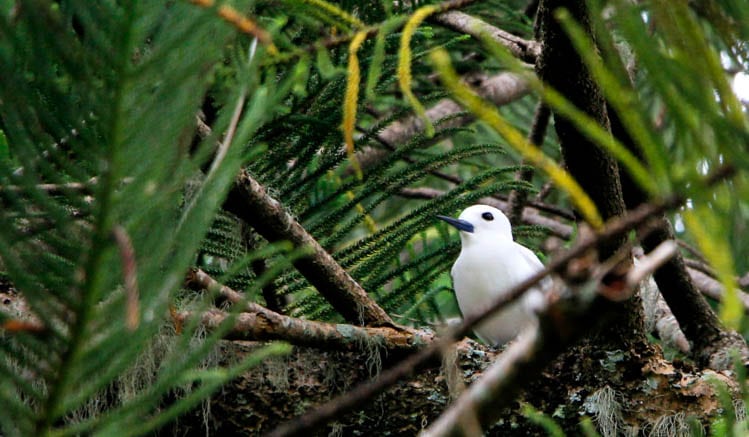
A Bird-Watcher’s Paradise
Similar to many other islands in the Pacific, NI is a birder’s paradise. There are many endemic species that evolved over millennia and are now found nowhere else on earth. Sadly, like the stories elsewhere in Oceania, many species have become extinct. Either due to poaching or the introduction of rodents.
Norfolk Island has over the last two centuries lost its endemic and unique versions of the ground dove, starling, kaka and pigeon among others. Hopefully, a few have been dragged back from the annals of extinction. Such as the Norfolk Island Green Parrot and the Morepork Owl.
In 1986, the latter had just one surviving member. Then researchers brought moreporks from New Zealand – the closest related species – to help repopulate the species on the Island.
The Green Parrot is a symbol of the Norfolk Island National Park. They seem to have evolved from ancestors that flew from New Zealand and were also on the verge of extinction a few decades back. Careful conservation activities with fiercer control of the introduced rodents have helped increase the population of this endemic rarity.
Like me, you can try seeking the bird in the dense rainforests of the Botanical Gardens. But if you don’t spot one, you can take a selfie with a gigantic model of the bird in the Discovery Centre at the Gardens.
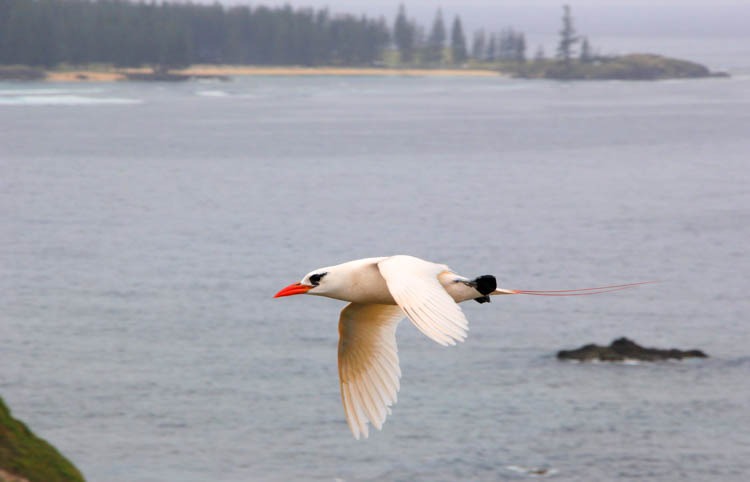
Seafaring Birds
The seafaring birds are easier to spot, especially along the coast, and are found in abundant numbers. Wedge-tailed shearwaters, masked boobies, sooty terns, black noddies and red-tailed tropic birds are the most common species.
The red-tailed tropic birds were my pick of the lot. They boast pristine white plumage and an orange-red beak coupled with two thin sabres of a fiery red tail. They look resplendent and majestic and visit the island from October to May.
If you happen to visit during their mating months in summer, do look out for their acrobatic flights of courtship. This includes hovering vertically or even flying backward.
One of the best spots to watch these birds is Point Ross. There are walks that rise steeply to the tops of the hills here and provide panoramic views all around. Views include the picturesque Emily Bay with its distinctive single pine tree.
Plus the denuded and brown Phillip Island (which was stripped of all plants by introduced pigs, goats and rabbits to provide for food to the early settlers). Also, on view are the flat, plateau-like Nepean Island and the ferocious waves that crash on the rocky coastline.
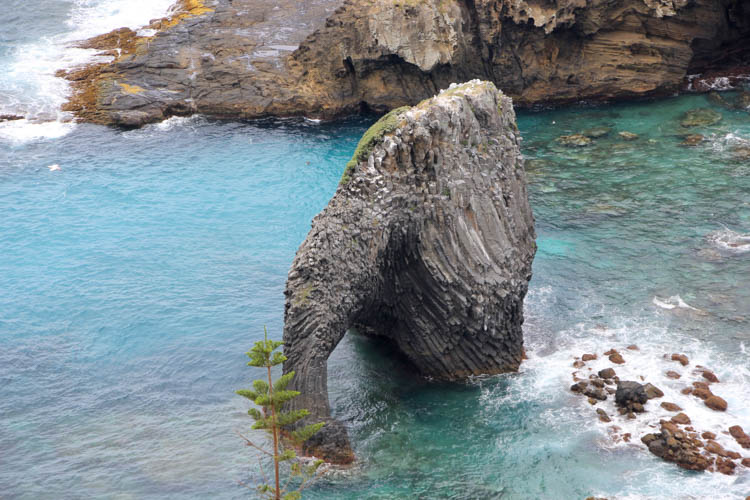
Bridle Track
The other great spot – or I should say walk – for birdwatching is the Bridle Track that hugs the northern slope of the island. It is rated among the best hikes on the island. Moderately steep in a few sections, it is less than 2 km and is replete with windy viewpoints that will literally take your breath away.
Besides the nesting birds, there are many rocky outcrops along the track, each a spectacle of its own. They are almost reminiscent of a small-scale, Norfolk Islander version of Victoria’s Twelve Apostles. The rocks stand like sentinels and are great subjects of photography.
They have simple names that clearly give away their USP. Elephant rock is structured like the pachyderm. Cathedral rock rises like a Tolkien-sian edifice from the seas. Green Pool rock houses a mossy green pool. Then there is the zenith in Bird Rock which is a bustling nesting site.
We visited in summer and found every other tern bird carrying a glistening silvery fish from the seas to feed its fledgling. Meanwhile, the tropic birds were in full form, making total use of the blowing winds to display their acrobatics.
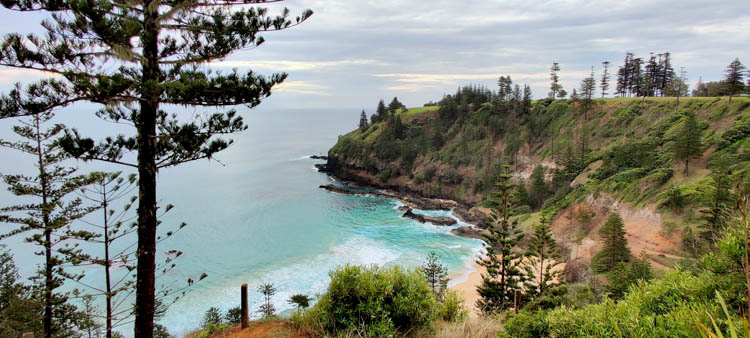
Hiking Highlights
The rocky island and its jagged coastline offer many opportunities for hiking. Some of my favourites include the boardwalk in the Botanical gardens and the hike down to the deep turquoise waters of Anson Bay. Also, the walk in the Cemetery close to Emily Bay entombs two centuries of life in exile so far away in the Pacific.
Another walk worth mentioning is the short hike from Mt. Pitt to Mt. Bates. These are the two highest points on the island. Both are from an extinct volcano that would have been a part of the convulsive birthing of the island 3 million years ago. There are spectacular views of the island from Mt. Pitt with some equally spectacular stories of the early settlers.
The peak was once a nesting site for the Providence petrel, a migratory seabird. However, during the early days of the struggle of the First Settlement (especially after the HMS Sirius sank, adding more hungry mouths to the nascent colony) the people fed on these birds. This ensured their survival. But it rendered the birds extinct on the island. Today, only a small colony survives on the nearby Phillip Island.
Nonetheless, the name has stuck. It’s a reminder that these were once birds of Providence. Birds that provided the survival of a struggling new colony in a windswept corner of the Pacific.
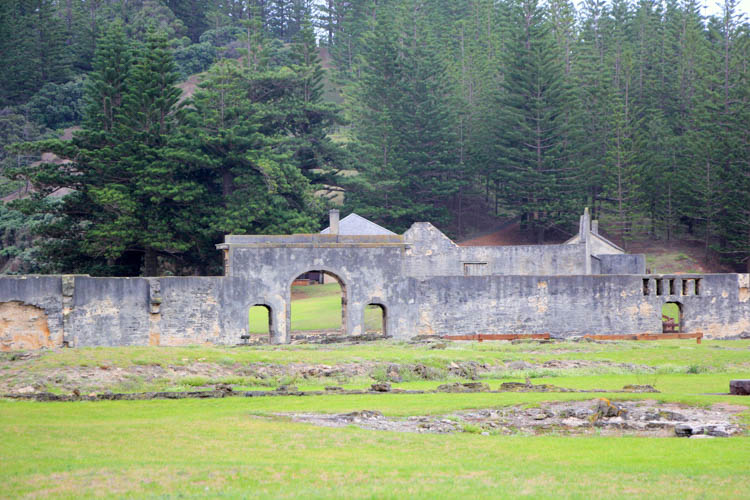
WWII Remnants
There are also remnants on the hike from the times of the Second World War. Then it was used as an airbase and refuelling station between Australia, New Zealand and the Solomon Islands. Though war never reached the shores of this pretty island, one casualty was the destruction of a convict planted, Pine Avenue to make way for an airstrip.
Today, the NI airport uses the runway. The name ‘Burnt Pine’ has stuck on the township around the airport. This is also the touristy and commercial heart of the Island.
The List Goes On…
Norfolk Island has an endless set of activities to keep all ages and curiosities satiated to the brim. Be it stargazing through guided Astro tours in search of the Southern Cross, ghost tours at the supposedly haunted Kingston penal area or glass bottom tours in search of a bale of huge green turtles.
Even feeding sharks at the Kingston pier (the island has apparently one of the highest concentrations of tiger sharks in the world). Norfolk Island has one long list of things to keep yourself occupied.
Some of my fondest memories include searching our way out of the maze in Strawberry Fields. And feeling dwarfed under the gigantic Moreton Bay fig trees near Hundred Acres Reserve with gnarly buttress roots taller than the average man. Also, admiring the beautifully tinted windows of St. Barnabas Chapel that once headquartered England’s missionary work in Melanesia.
Other memories include searching for homegrown, fresh produce at one of the many honesty boxes on the island and listening to the winds whistle and the waves crash from the green meadowy heights of Headstone reserve…As I said, the list goes on.
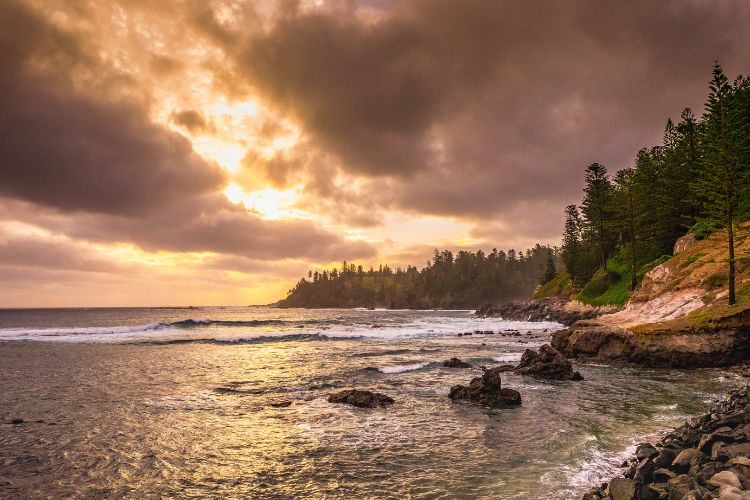
Don’t Miss the Sunset
However you choose to spend your holiday, do ensure you catch the ruddy warm sunsets from one of many reserves on the western part of the island. For me, the carmine colours at sunset, melting into the Pacific reinforced the sense of solitude and isolation of this island outpost. A place that, though tiny, packs a heavy allrounder punch laced with history, geography and animal life.
Norfolk Island is heavily under-rated, and even under-sought in the circles of tourism. But as I mentioned earlier, this only leads to making this destination even more novel and enjoyable with its lack of coach tours. There’s freshness in the island’s produce and flavours in its many stories.
All this will ensure you go back not just well rested, but also more informed and more aware of the world around us. Be it that of our own race and its survival, or that of nature that excels evolves and endures, no matter what the circumstances.
Author Bio: Ayan Adak is a consultant by profession and loves travelling, writing and photography. He has travelled to over 30 countries and has published multiple books on travel and poetry.

